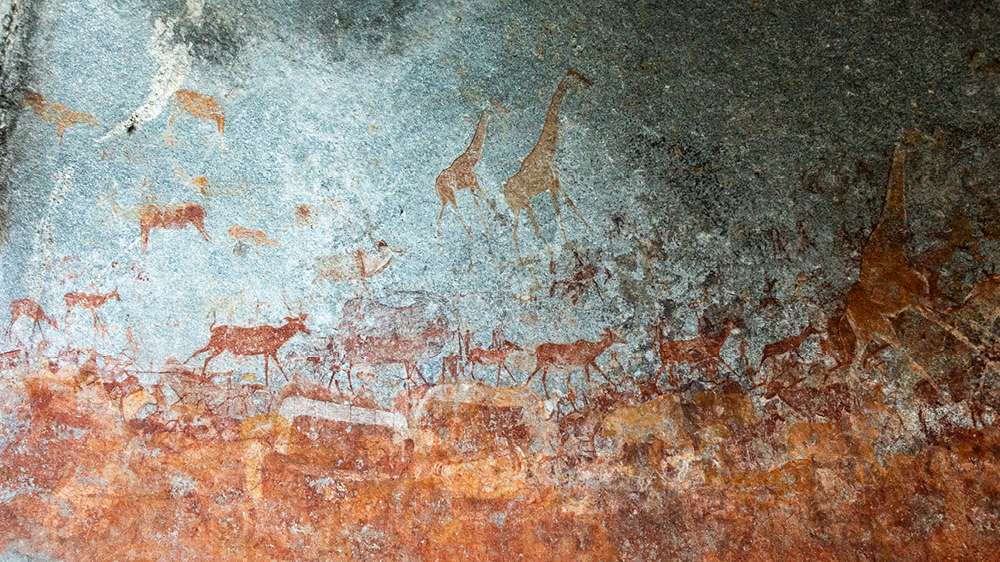Welcome
All are welcome! No pre-registration required. The event will be held in English. The event will not be streamed or recorded.
This event is part of Norway Life Science 2024.
Programme
10.15-10.30. Opening remarks
Åse Gornitzka, Pro-Rector, University of Oslo, Norway
10.30-11.10. The genetics of the Viking world
Anders Götherström, Stockholm University, Sweden
11.10-11.20. Q&A
11.20-12.00. Ancient DNA and the evolution of domestication
Greger Larson, University of Oxford, UK
12.00-12.10. Q&A
12.10-12.55. Break
12.55-13.05. Announcing the winner of the Darwin Prize
Nils Chr. Stenseth, CEES, Department of Biosciences & The Faculty of Mathematics and Natural Sciences, University of Oslo, Norway. Read more about the prize.
13.05-13.45. An archaeology of microbes
Christina Warinner, Harvard University, US, and Max Planck Institute for Evolutionary Anthropology, Germany
13.45-13.55. Q&A
13.55-14.35. Solving old mysteries with new science: On the (immense) potential of interdisciplinary collaboration in studying plague history
Phil Slavin, University of Stirling, UK
14.35-14.45. Q&A
14.45-14.50. Closing remarks
Kjetill S. Jakobsen, CEES, Department of Biosciences, University of Oslo, Norway
Abstracts and biographies
Anders Götherström
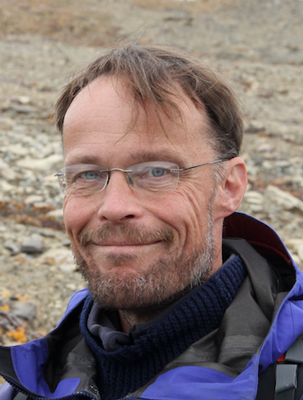
Professor of Molecular Archaeology, Center for Palaeogenetics, Department of Archaeology and Classical Studies, Stockholm University, Sweden
Lecture title
The genetics of the Viking world
Abstract
The Viking World is a limited area in a limited time period. We usually think of it as northern Europe, and especially Scandinavia, and between 750 (often 793) and 1100 (often 1066). This is all in all 12 generations. But nevertheless, a period full of processes and events that are important for the present-day Scandinavian identity. Archaeology can teach us about how people lived and what they did during these 12 generations, and a limited number of historical sources can further support our understanding of the period. Recently we have been granted a new source, genetics. Genetics can help us understand where people came from, where they went, and how the contact surfaces were organised during this period. Over the latest decade we have seen genetic results being produced relating to the Viking period but both based on modern DNA and ancient DNA. Not least has it been possible to generate genomic data from some 250 ancient individua’s, mostly from the Viking period. This massive amount of data has naturally provided us with a somewhat resolved overview of the genomics of the Viking world. I will discuss geneflow within the Viking world, and especially Scandinavia. I will also introduce you to some interesting individuals who lived and died during this turbulent time, a woman buried in a boat in Sala and a warrior buried by the Viking town Birka.
Biography
Anders Götherström is an archaeologist by training. He received his basic training and also Ph.D. degree at Stockholm University, focusing on archaeogenetics already form the beginning. Anders has since then worked both in Uppsala and Madrid, but always using genetics to answer archaeological question . Anders moved back to Stockholm University in 2012, and has since then worked at the department of Archaeology and Classical studies. In 2019 Anders founded the Center for Palaeogenetics (together with other researchers). CPG is a joint undertaking by Stockholm University and the Swedish Natural History Museum. Although Anders has worked with different organisms using different techniques over the decades, he has recently focused on human genomics on historic and prehistoric materials. Much of his recent work has been in Anatolia, where the first farming communities in our part of the world appeared. And more recently Anders has redirected his interest to later periods. Presently much of his work relates to historic periods. He is for example exploring the genetics of historic battlefields in northern Europe. And also investigating what kind of diseases turbulent periods brought with them.
Götherström's website "Ancient DNA Research".
Greger Larson
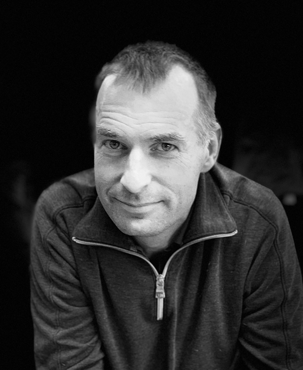
Professor of Evolutionary Genomics – School of Archaeology, University of Oxford, UK
Lecture title
Ancient DNA and the evolution of domestication
Abstract
In order to convince people of the efficacy of natural selection, Charles Darwin made us use of contemporary animal breeding practices to illustrate how selection and differential survival of offspring could result in measurable shifts of trait values through time. The unfortunate legacy of this analogy is that it falsely dichotomised artificial and natural selection, which has led to the presumption that domestication is somehow distinct from other forms for evolution. In this talk I’ll present two case studies that demonstrate how DNA derived from ancient domestic animals has generated insights into evolutionary concepts pertaining to admixture, drift, and even virulence associated with selection within anthropogenic environments. These narratives demonstrate how changing and intensifying human animal relationships have, often accidentally, driven evolutionary change, and how domestication is a brilliant model for not just artificial, but all evolutionary change.
Biography
Greger Larson received his bachelor's degree in 1996 from Claremont McKenna College, a small liberal arts college in California. He read just about everything Stephen Jay Gould ever wrote over the following three years while he wandered the deserts of Turkmenistan and worked for an environmental consultancy in Azerbaijan. Deciding that evolution was cooler than oil, Greger studied at Oxford and the University of Colorado before receiving his PhD in Zoology from Oxford in 2006. He then spent two years in Uppsala, Sweden on an EMBO postdoctoral fellowship before starting a job in the department of archaeology at Durham University. Greger then moved to Oxford University in 2014 to become the Director of the Palaeogenomics & Bio-Archaeology Research Network where he is continuing his focus on the use of ancient DNA to study the pattern and process of domestication. He rarely wonders what his salary would be had he stuck to oil.
Larson's webpage at University of Oxford.
Christina Warinner
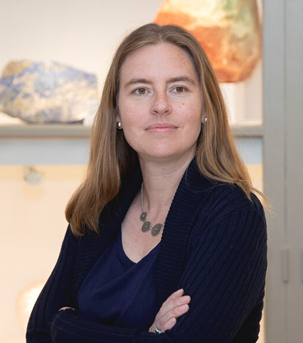
Associate Professor of Anthropology, Harvard University, US, and Group Leader of Microbiome Sciences, Max Planck Institute for Evolutionary Anthropology, Germany
Lecture title
An archaeology of microbes
Abstract
Humans have a deep and complex relationship with microbes. Beyond disease, microbes also profoundly shape human health and behavior through their activity in the microbiome and their diverse roles in food and cuisine. And yet we know very little about the origin, evolution, or ecology of the trillions of microorganisms that call us home. Recent advances in genomic and proteomic technologies are opening up dramatic new opportunities in the field of microbial archaeology, allowing us to investigate the complex and diverse microbial communities that have long inhabited our human bodies and our food systems – both in sickness and in health. From epidemic disease to alcoholic beverages, microbes are the invisible and often overlooked figures that have profoundly shaped human culture and influenced the course of human history. This talk discusses how emerging research on microbes is impacting how we investigate the human past and changing how we understand human and microbial cultures today.
Biography
Christina Warinner is an Associate Professor of Anthropology at Harvard University and Group Leader of Microbiome Sciences in the Department of Archaeogenetics at the Max Planck Institute for Evolutionary Anthropology in Leipzig, Germany. She specializes in the analysis of ancient DNA and proteins, and her research focuses on the study of ancient biomolecules to better understand past human diet, health, and the evolution of the human microbiome. She has conducted groundbreaking studies on the evolution and changing ecology of the human oral microbiome, including publishing the oldest oral microbiome to date from a 100,000-year-old Neanderthal, and she has published extensively on prehistoric migrations, the origins and spread of dairy pastoralism, and the biodiversity of the human gut microbiome. She is the President of the International Society for Biomolecular Archaeology and a member of the Balance of the Microverse Excellence Cluster. In addition to her research, she is passionate about public education and outreach, and she created the Adventures in Archaeological Science coloring book, now available in more than sixty languages. She is engaged in the open science movement, and her research group has been actively involved in improving scholarly communication, data sharing, and research transparency.
Warinner's webpage at Harvard University.
Phil Slavin
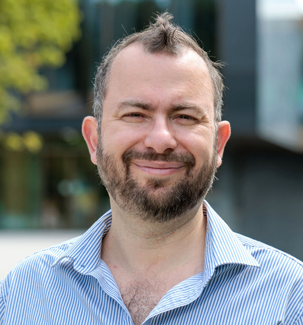
Professor of Medieval and Environmental History, University of Stirling, UK
Lecture title
Solving old mysteries with new science: On the (immense) potential of interdisciplinary collaboration in studying plague history
Abstract
Humans have always been fascinated with the history of cataclysms and disasters – including the history of plague, arguably the single most notorious killer. One of the reasons for this fascination is that there are many unsolved mysteries and long-standing questions and controversies related to this topic. Despite some progress associated with historical research, it was really not until the emergence of archaeogenetics and, in particular, aDNA studies, which took this field to altogether new heights, in the last 15 or so years. Thanks to new and ever-advancing revolutionary methods and techniques, much new and exciting knowledge has been created, with (some) old debates have been solved, new questions posed – and new challenges arise. To address and solve these, it is essential for scientists to join hands with historians and archaeologists, and conduct synergetic interdisciplinary research, based on versatile and innovative methodologies deriving from different, but ultimately aligned fields. The talk will explore some recent examples of such collaborative initiatives and their scientific results, and focus on ways forward to expand and potentially revolutionise this interdisciplinary work – in order to understand the history of plague, be prepared to tackle it in the present and possibly eradicate it in the future.
Biography
Rather than seeing himself as an historian in the ‘traditional’ sense, Phil views himself as a ‘scientist of the past’, whose methodology is inherently trans-disciplinary. Being blessed with amazing and unorthodox mentors both in Jerusalem (BA and MA) and Toronto (PhD) – and particularly, the late Prof. John H. Munro, his doctoral supervisor – he was lucky to realise all the pitfalls and shortcomings of ‘traditional’ (and indeed dry and boring) historical methods quite early in his career, which can be divided (so far) into two stages. Up until late 2017, Phil’s research focused on different aspects of economic and environmental history of late-medieval British Isles – and particularly, natural and biological disasters. In late 2017, he underwent a scientific ‘conversion’, whereby he shifted to work on the global history of plague pandemics – all the way from the Late Neolithic until our own days – in collaboration with his amazing colleagues in sciences. When not working (which is very rare), Phil enjoys playing music, hiking and tasting ales.
Slavin's profile page at University of Stirling.
Note that this year the event will take place in Helga Engs hus, Blindern.
